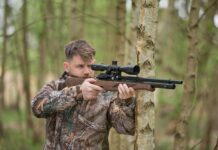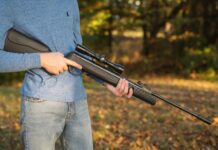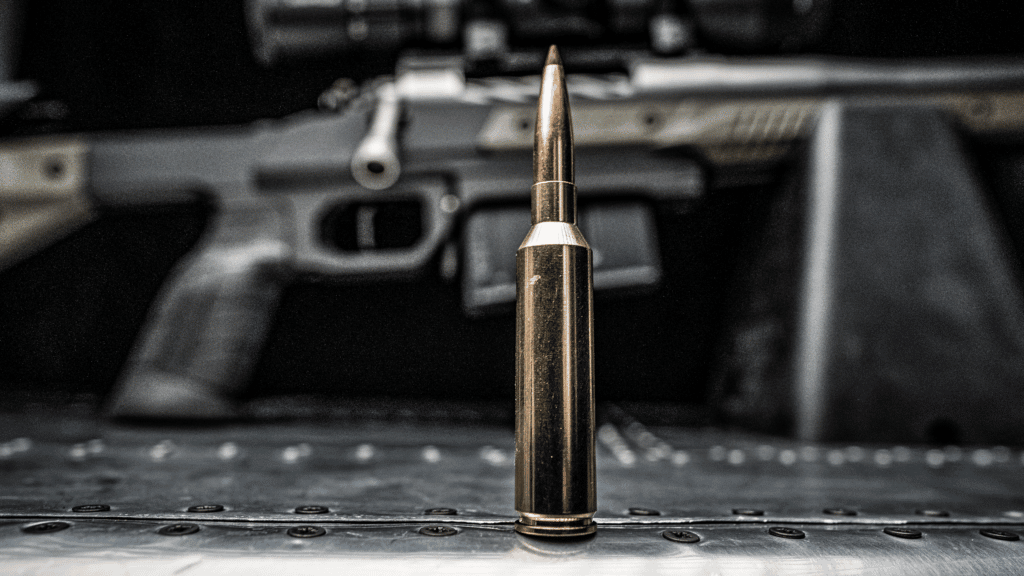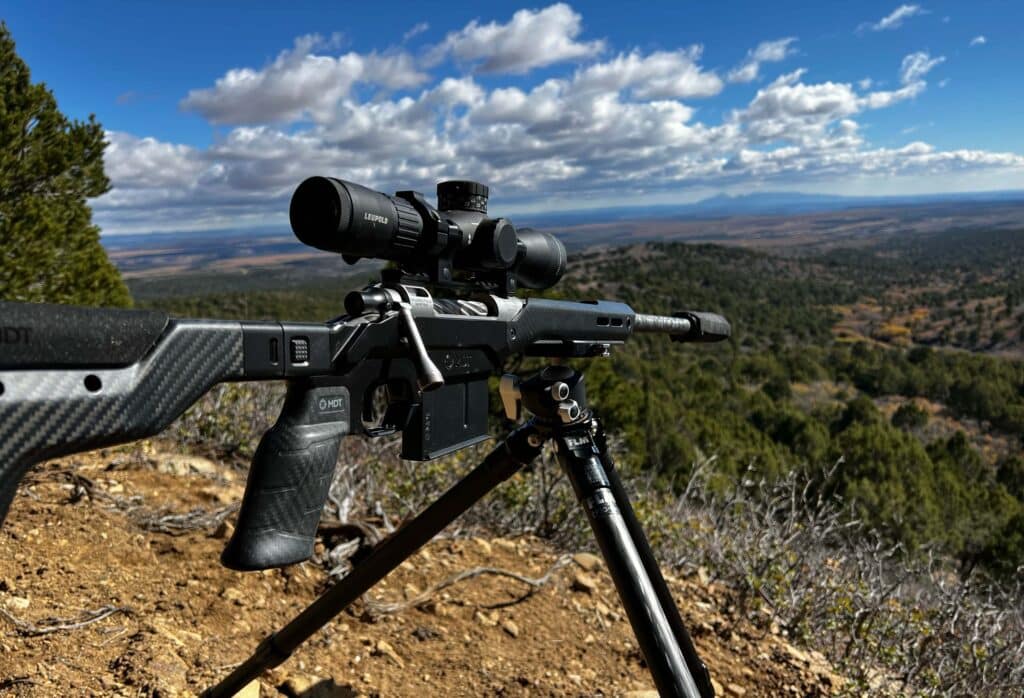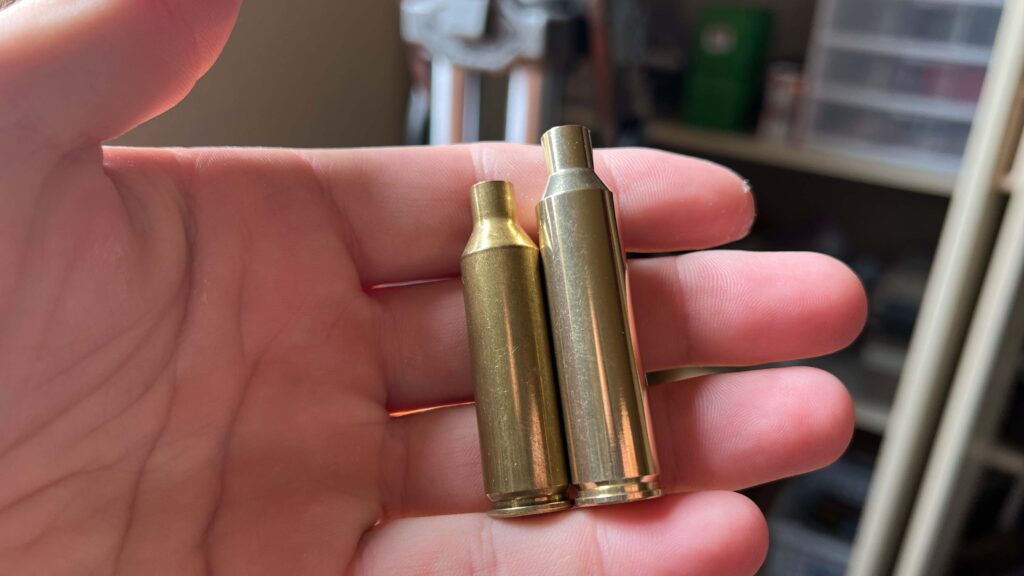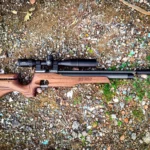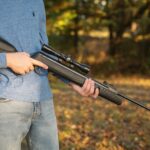When setup correctly, tarp shelters are like magic. With the right setup, you can stay dry in the rain, block rain, create a shady area to eat lunch, or even keep you warm on an unplanned night in the wilderness. There are literally hundreds of different tarp shelters you can use. Here I’ll go over the most important ones to know for camping, backpacking and survival/emergency use.
Want this information (and more!) in printable format?
Get my Camping Cheat Sheets!
The 42-page guide covers everything you need to know to enjoy the outdoors with confidence. Since you also like tarps, I’ll even give you a discount 🙂
Click Here for 50% Off
Jump to:
- Infographic
- Which tarp shelter setup is best?
- Horizontal Ridgeline Tarp Setups
- Diagonal Ridgeline Tarp Setups
- Tarp Setups with Poles
- Other Tarp Shelter Setups
Table of Contents
Tarp Shelter Setup Infographic

Which Tarp Setup Is Best?
The best tarp setups for camping are arguably: the A-frame, Adirondack, plow point, and holden tent. However, the best tarp shelter setup depends on many factors like the weather conditions, how you’ll be using it, and pitching conditions. Ideally, you will learn several setups including at least one which can be pitched quickly, doesn’t require trees or a ridgeline, has a built-in groundsheet, and is closed on three sides for weather protection.
Note: To hang a tarp properly, you’ll need to know the 7 main tarp knots and how to tie out the ridgeline and guylines.
Recommended Tarps:
- AquaQuest Guide Tarp: All-around good tarp which comes in a variety of sizes (10×10 size is 18.3oz).
- REI Trail Break Tarp: For when you need a larger tarp for car camping (12’x12′ size and 33oz).
- Sea to Summit Escapist Tarp: Lightweight tarp which is still durable (medium is 6 ft. 6 in. x 8 ft. 6 in and 9.5oz; large is 10×10 ft. and 12.3oz)
- Twinn Tarp by Gossamer Gear: Even lighter tarp for serious UL backpackers (just 9.7oz)
- Free Soldier Tarp: Very affordable tarp which is still lightweight. Plus it has tie-outs going down the middle! (large size is 118″ × 126″ and 42oz)
Don’t forget about cordage!
You will probably need at least 30 feet (10m) for a 10×10 tarp or 40 feet (12m) for a 10×15 tarp. I recommend getting REFLECTIVE paracord so you don’t walk into your ridgeline or tie-out points at night!
Horizontal Ridgeline Tarp Shelter Setups
These tarp shelters all have horizontal ridgelines. These are good options when you have two trees to pitch between. They are easy to learn and give you even headroom throughout.
The downside is that you’ll need a lot of rope (length of tarp + at least 8 feet for tying around trees). Some of the setups require even more rope to tie out guylines for walls or the roof. While many of these setups can be done with just poles, the roof has a tendency to sag.
Remember to make sure the ridgeline is perpendicular to the wind and the opening is on the leeward side!
1. A-Frame Tarp Shelter


The A-frame is one of the simplest and easiest tarp shelters to set up. It’s also somewhat versatile because you can hang it higher to get more headroom or hang it lower to get more interior space.
The major downside is that both ends of the A-frame shelter are open, so wind and rain can get in. For best protection, hang the A-frame so the openings aren’t facing the wind. If possible try to have at least opening next to a natural protection, such as a big bush which will block the wind from getting inside.
Instructions:
- Hang your ridgeline about shoulder height.*
- Put the tarp over the ridgeline. The midline of the tarp should be directly over the ridgeline.
- Spread out the sides of the tarp so they are taut. You can adjust the height of the ridgeline is you want the tarp to be higher or wider.
- Peg down the four corners of the tarp. Peg down the entire edge of the shelter for better weather protection.
- Use a prusik knot to secure the tarp onto the ridgeline
Notes:
- A higher ridgeline will give you more headroom but will be narrower. A lower ridgeline will give you more width inside but less headroom.
- A 9×9 foot tarp hung at a 60 degree angle will give you a width of 4.5 feet and max headroom of 3.9 feet.
- It’s possible to use poles to hang the A-frame, but you’ll really need to stake them out. Even then, the roof will still sag – so it’s best to use a ridgeline for this tarp shelter.
Pros:
- Adjustable height and width
- Very fast and easy setup
- Weather protection on two sides
Cons:
- Somewhat claustrophobic inside
2. Lean-To Tarp Shelter


Also called a wind break shelter, the lean-to tarp setup is fast and easy. The downside is that it doesn’t protect against rain well. It’s also not great against wind, unless the wind doesn’t change direction. For this reason, the lean-to is only recommended for tarp camping in good weather or as a quick shelter setup for breaks.
Instructions:
- Hang a ridgeline between two trees. Attach your tarp to the ridgeline. Alternatively, tie the top two corners of the tarp to the trees.
- Peg out the bottom corners of the tarp.
Notes:
- You can also use poles to hang a lean-to shelter. In this case, first peg out the bottom two corners of the tarp. Then attach the top two corners to poles and stake them out.
- The “Envelope” pitch is a variation of the lean-to. Simply fold the tarp under itself to create a groundsheet before attaching it to the ridgeline.
Pros:
- Very fast and easy to pitch
- Possible with square or rectangular tarps
- Can pitch with ridgeline or poles
- Good headroom and interior space
Cons:
- Poor wind and rain protection
3. Wind Shed


Also called a fold-over wind shed, this tarp setup is a cross between a lean-to and an A-frame. Depending on the weather, you can set it up so the roof is flat (for more headroom and shade) or slanted (to repel rain). When the roof is slanted downwards (as in the drawing), the setup is called a “wind shield wedge.”
Instructions:
- Hang a ridgeline.
- Drape your tarp over the ridgeline so approximately 2/3 is hanging on the windward side and the other 1/3 is on the leeward side.
- Extend the longer side of the tarp to make an angled wall. Secure the corners to the ground.
- Using rope or poles, secure the corners of the shorter side to make a roof.
Notes:
You can pitch using poles instead of a ridgeline, but it’s somewhat tricky. You’ll need a lot of rope to stake out the poles to make it stable enough. Even then, the roof ends up sagging and doesn’t hold up well in high winds.
Pros:
- Good headroom
- Fast and easy setup
- Wind protection from one side
- Some rain protection
Cons:
- Requires a lot of rope
- Guylines are tripping hazard
- Difficult to pitch with poles instead of a ridgeline
4. C-Fly Tarp Setup


The C-fly tarp setup is the same as the wind shield setup. The difference is that, with the C-fly, you fold under part of the tarp to create a groundsheet. Because much of the tarp is used for the groundsheet, you won’t have as much interior space or headroom.
As with the wind shield setup, you can keep the roof flat (for more headroom and shade) or angle it downwards (for better rain protection). When the roof is slanted downwards, it’s called a “C-fly wedge.”
Instructions:
- Hang a ridgeline about waist or shoulder height. A lower ridgeline will give you more weather protection but less headroom.
- Fold the tarp under on line AB. This will be your groundsheet. It should be at least 2 feet wide for one person.
- Drape the rest of the tarp over the ridgeline. AB should be on the windward side and CD should be on the leeward side.
- Adjust the tarp so line CD is sitting on the ridgeline. The part hanging over the ridgeline (CDFE) will be your “roof”.
- Pull corners A and B back to make an angled wall. Then stake them out.
- Use rope or poles to secure points E and F to make a roof.
- To make the shelter roof more taut, secure line CD to the ridgeline with a prusik knot.

Notes:
- To keep the wall and roof taut, secure points C and D to the ridgeline using a prusik knot.
Pros:
- Has groundsheet
- Adjustable height/interior space
- Decent weather protection
Cons:
- No weather protection on two sides
- Requires a lot of rope
- Can trip over guylines in the dark
- Difficult to pitch with poles instead of a ridgeline
5. Adirondack Wind Shed


This is one of my favorite tarp shelters. It offers very good weather protection while still giving you lots of interior space and headroom. One side is open, so you can have a fire in front of the shelter. Leave the “roof” up in good weather. If the weather gets bad, simply re-stake point D to pull the roof down.
The setup is also fairly flexible: you can experiment with folding the tarp at different places. Make the triangle folds bigger for more weather protection.
Instructions:
- Hang a ridgeline about shoulder height.
- Fold the tarp so triangle AEF is on the ground. The line EF should be on the windward side and point A on the leeward side.
- Drape the tarp over your ridgeline. Line GH should be sitting on the ridgeline.
- Pull EFHG back to create a wall. If you aren’t happy with the angle of the wall, adjust the height of your ridgeline.
- Stake out points E and F
- Pull point C inwards to create a side wall. Stake it down. Do the same with point B.
- Using rope or a pole, stake out point D.
- To make the shelter more taut, use a prusik knot to secure points D and G to the ridgeline.

Notes:
- If you want to use poles instead of a ridgeline with this setup, you’ll probably need a partner to help.
- Use fluorescent rope so you don’t trip over your guylines!
Pros:
- Good headroom and interior space
- Great wind protection
- Decent rain protection
- Has partial groundsheet
Cons:
- A somewhat difficult setup which requires practice to get right
- Uses a lot of rope
- Guylines are a tripping hazard
6. Body Bag Tarp Setup


Also called a tube tent, this is a simple tarp shelter. Because it is so small and uncomfortable, it’s really only for emergency situations. It is only closed on two sides. However, because the openings are so small, the tree trunks used for pitching will actually provide some weather protection. For even more protection, pitch next to a bush, boulder, or other natural protection.
Instructions:
- Hang a ridgeline around thigh height.*
- Fold the tarp along AB to create a groundsheet.
- Drape the tarp over the ridgeline so CD is sitting on the ridgeline.
- Adjust the position of the walls then stake out points A, B, E and F.

Notes:
- A 9×9 tarp will only give you a bit more than 2.5 feet of headroom at the highest point.
- I don’t recommend using poles for pitching the body bag setup. The roof will sag and there’s barely any headroom as is!
Pros:
- Good rain and wind protection from two sides
- Has groundsheet
- Quick and easy to set up
Cons:
- Open on two sides
- Claustrophobic inside
- No headroom and very little interior space
- Have to crawl inside
7. Shade Sail


The shade sail is also called the “hammock shelter” or the “diamond tarp.” Because it is pitched on the diagonal, you get more coverage. It’s popular for hammock camping and also as a sun shade for camp kitchens or even patios.
Note that the shade sail setup is not the same as the diamond fly. The diamond fly is also pitched on the diagonal, but one corner is staked to the ground. With the shade sail, both corners are elevated.
Instructions:
- Hang a ridgeline.
- Drape the tarp over the ridgeline. The diagonal midline should be on the ridgeline.
- Use a prusik knot to secure the corners to the ridgeline.
- Stake out the corners to create two angled walls. Keep the walls angled lower for more weather protection.
Notes:
- If you aren’t using a ridgeline, then just tie the diagonal corners to trees. Or attach to poles. However, the roof will sag a lot without a ridgeline.
- The guylines on this are serious tripping hazards. Use fluorescent rope!
Pros:
- Easy to pitch
- Lots of interior space
- Decent protection from rain and wind
Cons:
- Uses a lot of rope
- Guylines are tripping hazards
- Roof sags without ridgeline
8. Baker’s Wind Shed

The baker’s wind shed tarp setup uses a rectangular tarp. The tarp needs to be at least 10 feet on the long side if you want to sleep in it with your head towards the side walls. If your tarp is very large, you could also sleep with your head towards the back wall of the shelter.
I personally don’t like the baker’s wind shed setup very much. The Adirondack gives you more protection without sacrificing much space. However, the baker’s wind shed can be good when tarp camping with multiple people all sharing one big tarp.
Instructions:
- Stake FG to the ground on the windward side.
- Pull point A inward. Line AF should be at approximately 90 degrees with FG. Stake point A to the ground. Then the same with point D.
- Attach points B and C to a ridgeline or poles.
- Tuck corners E and H underneath the shelter to create a partial groundsheet. Alternatively, you can leave them outside the shelter.

Notes:
- Lines AB and CD are the height of the shelter when set up.
- An 8×16 foot tarp can be folded so line BC is 6 feet long. This will give you a max height of 5 feet and a depth of 9.4 feet.
Pros:
- Lots of interior space
- Protection on three sides
Cons:
- Need a long tarp
- Not lots of headroom
Tarp Setups with Diagonal Ridgelines
These tarp setups are good for when you only have one tree. You can also use a pole instead of a tree for many of these tarp setups. Unlike with the setups which use horizontal ridgelines, the roof won’t sag as much. Another benefit of these setups is that they don’t use a lot of rope.
You can get by with just 3 feet of rope for pitching some (though I recommend always bringing more just in case!). There is less interior space around the foot-end of the shelter, so the tarp will trap heat better. The drawback of this though is that they are claustrophic and you may need to crawl in feet-first.
9. Bivvy Bag Tarp Shelter

 Also called the “cornet”, the bivvy bag tarp shelter is incredibly cramped (hence the name). However, it’s also one of the best tarp shelters for bad weather. You can pitch the bivvy bag on one tree or with a single pole. Unlike other tarp shelters which use poles, this one is actually easy to set up.
Also called the “cornet”, the bivvy bag tarp shelter is incredibly cramped (hence the name). However, it’s also one of the best tarp shelters for bad weather. You can pitch the bivvy bag on one tree or with a single pole. Unlike other tarp shelters which use poles, this one is actually easy to set up.
Ultralight backpackers will also love that the bivvy bag shelter requires just one guyline, so you save weight on rope.
What size tarp for a bivvy bag shelter?
You will probably want a 10×10 foot tarp for the bivvy bag shelter. The smallest size you can get away with is an 8×8 foot tarp. This will give you a shelter with an entranceway 4 feet tall and 4 feet wide and a length of 11 feet. But note that the groundsheet starts between CE (not at point D!). So, with an 8×8 tarp, the groundsheet length is only about 7 feet long. Because the end is so cramped, there’s actually barely enough room for a 6 foot tall person. You only get 3 feet of headroom at the place where the groundsheet starts and it gets narrow quickly.
Instructions:
- Fold the tarp in half on the diagonal line AD
- While holding the tarp upwards from point D, tuck sides AF and AB underneath so they are slightly overlapping each other. This will prevent the groundsheet part of the tarp from touching wet or muddy ground.
- Stake point A to the ground.
- Secure point D to a tree or pole.
- Adjust the walls and then stake out points E and C.

Notes:
- The bivvy bag shelter is sometimes incorrectly called the
- Because of the shape, this tarp shelter is not good for two people.
Pros:
- Good weather protection
- Has groundsheet
- Uses almost no rope
- Can pitch with one tree or pole
- Traps body heat
Cons:
- Very claustrophobic inside
- No headroom
- Have to crawl inside feet first
10. Hunchback Bivvy Bag


The hunchback tarp shelter is a variation of the bivvy bag setup. It uses a pole to support the roof above the groundsheet. This allows you to angle point D downwards to create a “beak,” which means that the shelter roof blocks rain better.
Instructions:
- Fold the tarp in half on the diagonal line AD
- While holding the tarp upwards from point D, tuck sides AF and AB underneath so they are slightly overlapping each other. This will prevent the groundsheet part of the tarp from touching wet or muddy ground.
- Stake point A to the ground.
- Put a pole upright at point G
- Secure point D to the ground
- Adjust the walls and then stake out points E and C.

Notes:
- This tarp setup doesn’t need a ridgeline or trees at all, but I included it in this section so you can see how it differs from the classic bivvy bag setup.
- You can also set it up without a pole. In this case, you’ll create a tie-out point at point G and use guylines to attach it to a tree. Then you’ll tie the guyline at point D to the ground.
Pros:
- Great weather protection
- Has groundsheet
- Uses almost no rope
- Can pitch with one tree or pole
- Traps body heat
Cons:
- Very claustrophobic inside
- No headroom
- Have to crawl inside feet first
- Requires a pole
- Can easily knock pole over
11. Plow Point


Also called the plough point, flying V or diamond fly, this is another easy tarp shelter. You don’t need to use a ridgeline at all – just tie it directly to a tree. However, the plow point does have a tendency to sag if you don’t use a ridgeline.
Instructions:
- Secure one corner of the tarp down on the windward side.
- Tie the opposite corner to a tree or secure it to a pole.
- Spread out the sides and secure down the remaining corners.
Notes:
- Tying the tarp higher will give you more headroom but less interior space and weather protection.
Pros:
- Very easy to pitch
- Uses very little rope
- Only needs one tree or pole
- Adjustable height and interior space
- Lots of room for gear storage
Cons:
- Hard to get sides taut without ridgeline
- No protection on one side
12. Half Pyramid Free End


I personally don’t like this tarp shelter setup very much. IMO, the A-frame closed end or diamond fly give better coverage while providing more interior space. The bit of groundsheet you get with the half pyramid isn’t enough to justify the lost interior space.
However, the half pyramid can be very useful when combined with other tarp setups. For example, you can use it to make a vestibule or close off the entrance of another setup. Or you can put two half pyramids together to make a fully-enclosed tent.
Instructions:
- Fold point A under the tarp. Stake down points E and F.
- Secure point D to a tree or pole.
- Pull in point B to create a wall. Depending on the angle of the roof, you may need to fold under some of the tarp. Stake down the corner. Do the same with point C.

Pros:
- Lots of headroom
- Easy setup
- Can be used with other setups
- Decent weather protection
Cons:
- Only partial groundsheet
- Not much interior space
13. Forester


The forester is a more difficult tarp shelter to pitch. It doesn’t work well with tarps made from more rigid materials (like painter’s dropcloth). You are better off using silnylon or canvas. Once you master this pitch though, it’s incredibly useful. You get excellent weather protection without sacrificing usable space.
Instructions:
- Stake down corner A on the windward side.
- Fold point D downwards to create point G.
- Support point G with a pole. It helps to have a partner hold it up for you while doing the next steps.
- Pull point C forward to create wall ACG. Stake point C down.
- Pull point B forward to create wall ABC. Stake point B down.
- Spread out triangles CGE and BGF to make door flaps.
- You’ll have a bit of extra tarp material hanging inside the shelter. You can use a clip to hold it out of the way.

Tip: If you are going to use this pitch frequently, I suggest making a little mark on your tarp where the pole should go. Also note the height of the pole. This will make it faster and easier to set up.
Pros:
- Excellent weather protection
- Doesn’t require trees
- Uses very little rope
- Lots of interior space and decent headroom
Cons:
- Difficult to pitch, especially alone
- Requires pole
14. Bunker Half Cone Fly

The bunker half cone fly is similar to the plow point in that both are pitched on the diagonal. The difference is that the bunker setup uses two additional guylines to pull out the sides of the tent. This creates a V-shaped roof and two almost vertical walls.
While the configuration means you get slightly less interior space, you get much more headroom. This makes the bunker suitable for multiple people and much more comfortable for multi-night stays. It’s also better for larger tarps because the additional guylines prevent the walls from sagging.
Despite looking easy, the bunker half cone fly is actually a bit tricky to set up. You’ll need a good tarp too since the guylines put a lot of strain on the sides and they can easily tear.
Instructions:
- Stake point A to the ground on the windward side.
- Tie point D to a tree or a pole on the leeward side. Alternatively, you can run a ridgeline from point A to a tree and connect point D to it. This will help prevent the roof from sagging.
- Pull out point B and stake it to the ground. Do the same with point F.
- Attach a guyline to point C. Pull it outwards and secure it to the ground. Do the same with point E.
- If windy, stake down the edges on AB and AF

Pros:
- Good weather protection
- Lots of headroom in the front
- Large entryway
Cons:
- More difficult pitch
- Roof sags without ridgeline
- Requires two additional guylines
Tarp Shelters which Use Poles (No Trees Required)
These tarp shelters are a bit more tricky to set up because you’ll need to stake out the poles to keep them upright (which takes some practice). If you have a very large tarp, then you’ll need a long pole – which may require you lashing two poles together. But, these tarp shelters are good to know in case you can’t find a suitable tree for pitching against. They are also great tarp shelters for ultralight backpackers because you don’t need to bring much rope with some setups.
Note that there are also many UL tents which use trekking poles instead of normal tent poles. See the best trekking pole tents here.
15. Holden Tent

Also called the “A-frame closed end” shelter, the holden setup is one of the best tarp shelters for ultralight backpacking, especially with two people. It is very fast to pitch and doesn’t require any trees.
For a tarp shelter with three walls, there is actually a lot of interior space inside and decent headroom. Since the shelter is open on one side, it doesn’t feel claustrophic either.
My main complaint with the holden tent shelter is that you have to lay the tarp flat on the ground. This means that, if the ground is muddy, the underside of the tent completely dirty. Thus, for muddy weather, you are better off with a shelter like the plow point.
Instructions:
- Lay the tarp flat on the ground.
- Stake out points A, B and C.
- Put a pole under the tarp at point E. You’ll need to angle it slightly forward.
- Pull point D forward to create a wall then stake it down. Do the same with point F. You might need to have a partner hold the pole upright while doing this.
- Secure the pole in position with a guyline.

Notes:
- Depending on where you stake down the walls, you will end up with either a square or triangular interior.
Pros:
- Good interior space
- Decent headroom
- Weather protection from three sides
Cons:
- Can accidentally knock over the pole when getting in/out
- Takes practice to pitch by yourself
16. Dining Fly

The dining fly is one of the most important tarp shelters to know for car camping. As the name suggests, it is great for creating a covered area for cooking and eating. It might take a few tries to figure out the optimal height and roof angle (and thus the right pole length and guyline position). But, once you figure this out, the dining fly is actually pretty simple to set up.
Instructions:
- Lay the tarp flat on the ground where you want your shelter to be.
- Attach guylines (about 4-6 feet long each) to all four corners of the tarp.
- Stake out all of the guylines. They should be approximately 5 feet away from the corners of the tarp and set at a 45 degree angle from the corners.
- Find two very long poles. If you can’t find poles long enough, you can join two poles together using round lashings.
- Using half hitches, tie long guylines to the top of each pole.
- Push the first pole underneath the tarp so it’s at middle edge. It helps to have someone hold this pole in place while you do the next steps.
- Push the second pole underneath the tarp. Now the roof of the dining fly should be completely raised.
- Stake out the guylines on the poles.
- Adjust the guylines on the corners so the tarp is very taut.
Pros:
- Excellent headroom
- Lots of interior space
Cons:
- Uses two very long poles and a lot of rope
- Takes practice to set up, even with help
- Rain and wind enter from sides when pitched high
- Underside of tarp gets dirty when ground is muddy or wet
17. Toque Tent

The toque tarp tent is quite different from the other setups. Instead of having the pole in the front of the shelter, the pole is set in the back. This means you end up with more headroom in the back (but a really low entranceway). Two guylines pull on the entranceway to create an awning. This awning does a great job of repelling water away from the shelter. However, the toque tent isn’t very stable in heavy winds.
Instructions:
- Fold the tarp so points A and B are together. Stake them to the ground together on the windward side. This is now called “point AB.”
- Put a pole under point G. The bottom of the pole should sit on point AB. This will make sides AG and BG stand straight up.
- Pull out point C to create triangular wall AGC. Stake down point C. Do the same with point F.
- Attach guylines to points D and E. Pull them outwards and stake them down. This will create a low awning.

Pros:
- Pole at back instead of blocking entryway
- Good rain protection
Cons:
- Weird interior space
- Not very sturdy in high winds
18. Tarp Tent

The tarp tent configuration can be a bit confusing at first. But, it’s actually not that difficult to set up. It’s a favorite tarp shelter for ultralight backpacking.
Instructions:
- Lay tarp flat on the ground.
- Stake out points A and B.
- Now stake out points C and D, making sure that folds AD and BC are nice and tight.
- Tuck corner F underneath fold AD. Then tuck corner E underneath fold BC.
- Point H is on the ground. Pull tarp corner G there and stake it in place.
- Point J is also on the ground. Pull tarp corner I there and stake it down.
- Put a pole underneath the tarp so it stands up at point K. Put a cloth over the top of the pole so it doesn’t tear a hole in your tarp.
- You’ll have a flap of tarp hanging in the entryway to the shelter.
- Attach guylines to the midway points on the flap (points L and M). Pull the guylines back and secure them to the ground along the walls of the shelter.
- Run a guyline from point N to the ground directly in front of the shelter.

Pros:
- Excellent weather protection
- Decent interior space
Cons:
- Underside of tarp gets dirty if setting up on wet or muddy ground
- Slightly more difficult to learn
- Pole can get knocked over
Other Tarp Shelter Setups
Once you learn the basic tarp shelter setups, you will be able to experiment with variations to meet your needs — such as staking out an extra side to get more interior space or adjusting the position of the ceiling to block rain. Here are some examples.
19. Modified A-Frame
One wall of the tarp has been pulled outwards in the middle to get more interior space, but the sides are down for weather protection.

20. Kayak Pitch
This is essential an A-frame tarp setup with one side more slanted down than the other. Instead of poles, kayak paddles are used.

21. Large Bunker
This tarp setup a lot like the bunker half cone. However, there are extra guylines on the sides. This helps pull out the walls to keep them from sagging and to give you more interior space.

22. UL Tarp Setup
Pitching low to the ground means you get weather protection even from a tiny, ultralight tarp. The head area is staked a bit higher so it isn’t as claustrophic inside.

23. Wind Shed Variation
One walls slants and the other has a partial wedge to make use of the space and tree positions.

24. Wind Shed Variation 2

25. Half Tetra Wedge Cover
This is a flying half tetra wedge setup. The roof is angled downwards, which is great for directing water off the tarp in rainy weather.

26. Homemade Tarp
Here’s a very small, UL tarp made by Bob Cartwright of The Outdoor Station.

27. Umbrella
Here’s a way to set up a tarp so it makes an umbrella shape.


